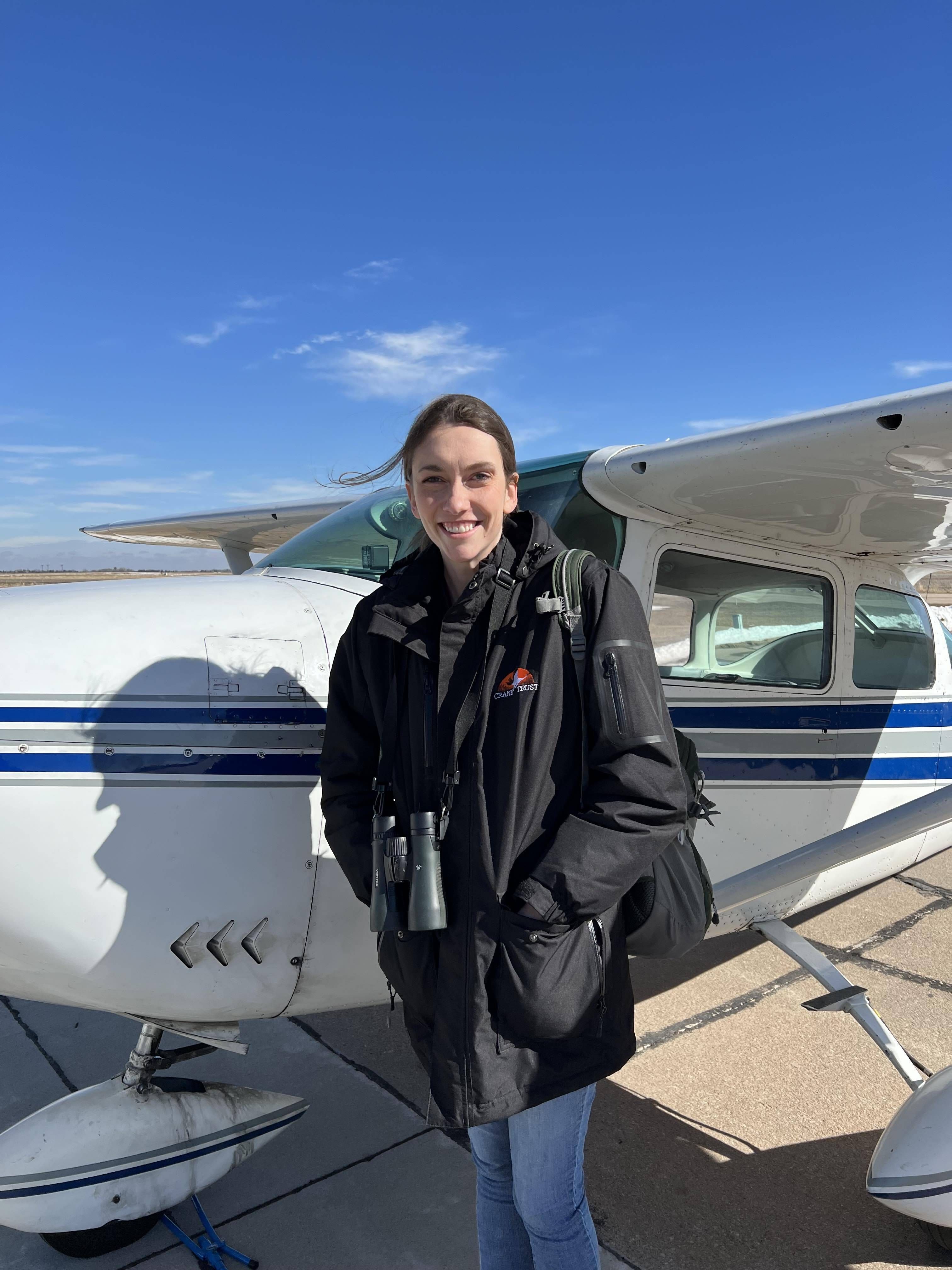
Next week, we take the first of our yearly aerial crane count surveys of 2024! I would say that this time of year has snuck up on us but if you have been staying up to date on happenings around the Crane Trust you know the cranes have not necessarily given us a break since the fall.
Fall/Winter Recap
As an update, it was a very unusual fall and winter season for our North American cranes. We saw our first Sandhill Cranes in mid-October, which is fairly typical. By November 10th we had an estimated 30,000 cranes in and around Crane Trust land! Those numbers “dwindled” over the course of the next few weeks to a “mere” 15,000. This is quite unusual. Typically, during the fall migration, Sandhill Cranes spread out in space and time, using a larger region for their stopovers, only stopping for a few days at most before moving on. Based on discussions with our partners in the Central Platte Valley, very few Sandhill Cranes used portions of the river outside of the 12-mile stretch around the Trust. We couldn’t be certain how long individual cranes stayed in the area. But based on anecdotal evidence and a uniquely marked leucistic* crane, some of these cranes were thought to be here for three or more weeks during the normal migration season!
*Leucism is a lack of pigment that occurs in some animals, resulting in white patches or spots on skin, fur, or feathers.
However, three weeks is short in comparison to the group of 14,000-15,000 cranes that spent the holidays with us, along with two Whooping Cranes further east! It was looking like these birds were planning on staying in Nebraska until spring since they stuck with us through one blizzard and the previous winter conditions were fairly mild. Thankfully, all but around 300 Sandhill Cranes left the Platte Valley, including the two Whooping Cranes, right before the sub-zero cold front that hit the state the second week of January. Cranes are adapted to endure cold temperatures, but the threat of their legs getting stuck in the ice or thick snow hiding their food source is real. We do have occasional small groups of cranes overwinter, the largest known group being around 5,000, but we have never before seen this large of a group stay here for so long.
Early Spring Newcomers!
With that all being said, we and our partners upriver have already seen flocks of Sandhill Cranes return to the Platte River this past week! This isn’t completely unusual as we see trends suggesting that above average temperatures and drought conditions in the cranes’ wintering grounds are associated with earlier arrivals of more cranes to the Platte. In the relatively mild and dry Winter/Spring of 2022, we had a few thousand cranes here in January and at least 10,000 here the first week of February. This Winter/Spring has been relatively mild (except for a few weeks where Nebraska was literally colder than the Poles). However, compared to the last few years drought conditions have much improved here and in the south, except for areas of New Mexico. The cranes that have already returned to the Platte might have only come from Quivira National Wildlife Refuge in Kansas since we have heard reports of overwintering cranes there as well. While many anticipate March for the spectacle of thousands of cranes, February has its own underrated beauty with thousands of geese, ducks, hawks, Bald Eagles, and cranes filling the river and sky. It is a diversity we don’t witness as readily in March.
What to Expect this March
We often are asked when peak migration will be. There are many factors that play into cranes’ decisions when to migrate, many of which we probably do not understand. However, based on trends from past years and current predictions of weather conditions, it is looking like the middle of March will show peak numbers from our counts. However, to everyone viewing cranes from our riverfront blinds, many days in March feel like “peak migration” and are worth witnessing.
On Valentine’s Day we will begin the 26th year of aerial Sandhill Crane surveys. These will continue weekly till the middle of April. Weather can create unsafe flying conditions and often causes these flights to be rescheduled unpredictably. Time is also needed after the flight to calculate the numbers of cranes surveyed so the count estimate is often not available the same day as the flight. However, we will report the numbers to the public through social media and these blogs as soon as they are available, which will most likely be towards the end of each week.
Whooping Cranes will also be in the area around mid-March! As a federally endangered species it is unlawful to disturb them. If you are lucky enough to witness this elegant white bird, please do so with respect and from a distance. If you do spot a Whooping Crane, you can serve as a citizen scientist and report your finding to the public sightings database below. This information helps biologists monitor the endangered species throughout their entire migration.
Learn how we conduct our crane surveys! https://plattebasintimelapse.com/counting-cranes/
Want to test your own crane counting abilities? Check out the training program we use to prepare for the season!
https://www.fws.gov/waterfowlsurveys/welcome.jsp?menu=home
‘Till next week!
Bethany
